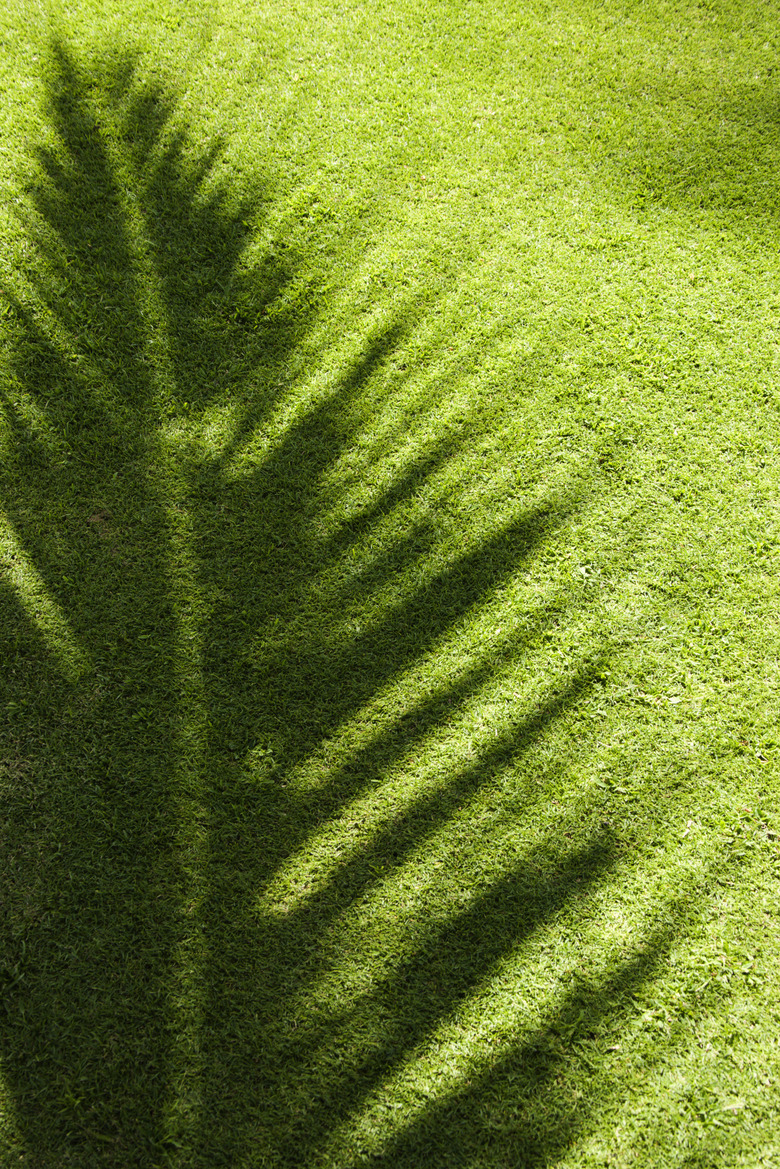Can Grass Grow In Artificial Light?
Growing grass in shady areas of your lawn can be frustrating. You can't control the amount of sunlight that grass gets, but you can supplement that light. You can also grow grass inside if the mood strikes you, either for decoration or for a pet's enjoyment. Even a sunny windowsill might not provide enough light for your indoor grass to thrive, but adding artificial light can help.
Types of Grass
Before adding artificial light to help your grass grow, ensure you're using the right type of grass for the space. Some grass grows better in low light than other types. Fescue (Festuca spp.), for example, survives in shady conditions in U.S. Department of Agriculture plant hardiness zones 3 through 8. Zoysia grass (Zoysia spp.) is a shade-tolerant, warm-weather grass in zones 6 to 9. Grasses that don't mind a bit of shade are more likely to thrive under artificial light, which isn't quite the same as sunlight.
Types of Light
Not all light is created equal. Incandescent lights tend to give off more of a red hue, which is helpful with new grass that needs to mature. Fluorescent light leans more toward the blue spectrum, which encourages blade development and thickness. Mixing the two might give you the best results. Commercial grow lights often incorporate both varieties of light to cover both spectrums and give your grass the light it needs for each development stage. Large areas of grass can benefit from photosynthetically active radiation, or PAR, lights, which more closely resemble sunlight. However, these systems are prohibitively expensive for most home consumers and are more likely to be used by groups such as professional sports teams to maintain their athletic fields.
Duration
Even shade-tolerant grass needs at least three hours of sunlight to grow. If your grass receives only artificial light, prepare to double that so the grass gets a minimum of six to eight hours of light per day. Grass that gets some sun but needs a boost from artificial lighting might need just a couple of hours per day, or you can turn on the artificial lights all night to increase the grass's exposure. This can help the grass become full and thick, even when the sunlight is inadequate.
Temperature
Temperature is another factor in grass development. Some grasses don't like cold weather, while others thrive in it. Incandescent lights give off more heat than fluorescent ones, so they can help keep your grass warm enough to continue growing if the temperature isn't cooperating with your growing schedule. Place incandescent bulbs about 12 to 17 inches above your grass to get the right light and heat levels. This allows the heat to spread out slightly and keeps the grass from burning from heat that is too close and focused.
References
- Humane Society of the United States: How Does Your Cat Grass Grow? Plant a Feline-Friendly Indoor Garden
- All About Lawns: Bring the Grass Inside This Winter
- KING5.com: Mariners Groundskeepers Turn to Artificial Light to Grow Field Grass
- Alberta Agriculture and Rural Development: House Plants: Artificial Light
- Mississippi State University Cooperative Extension Service: Select the Right Grass
- Packers: Lambeau Experimenting With Growing Lights
